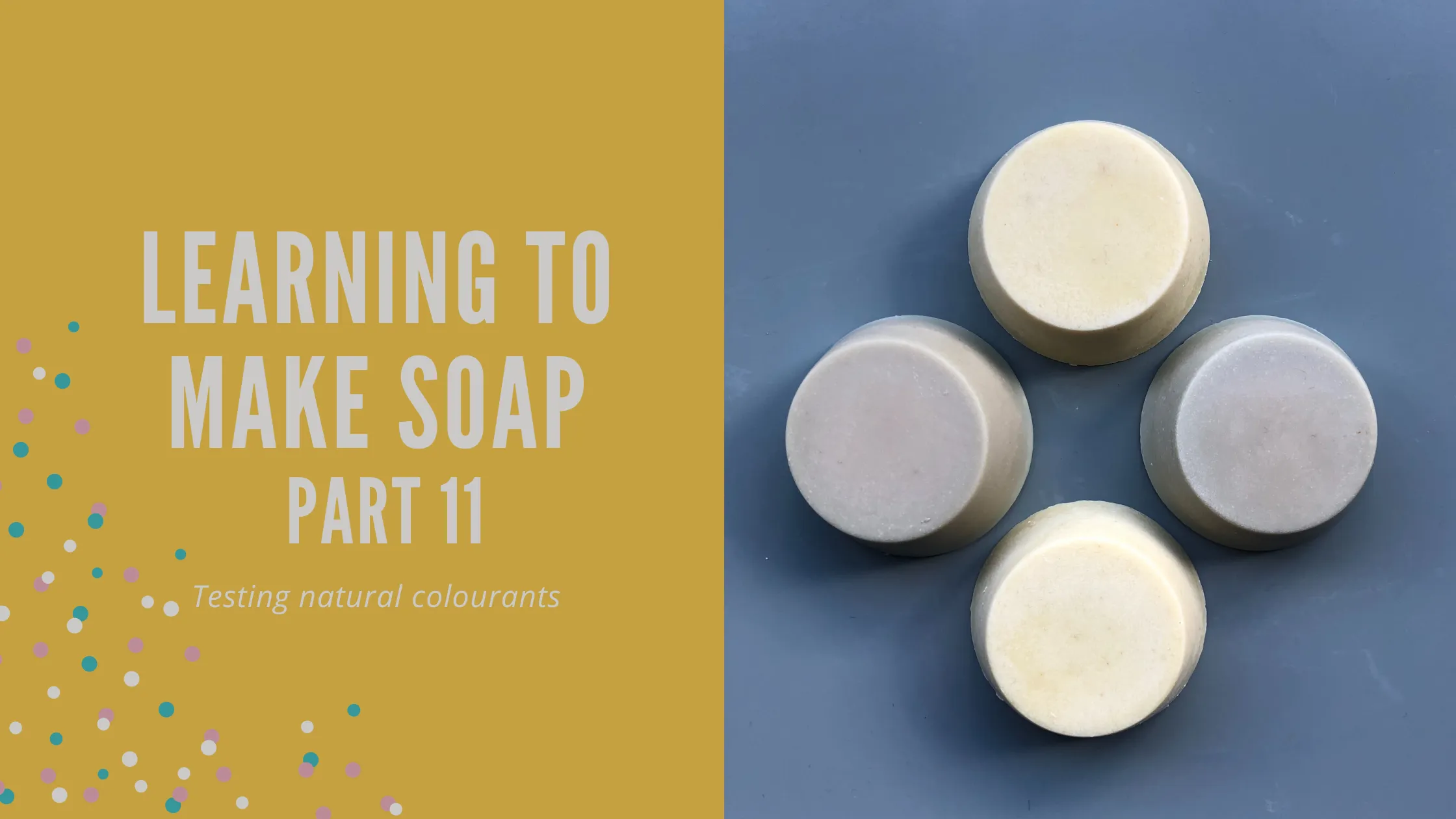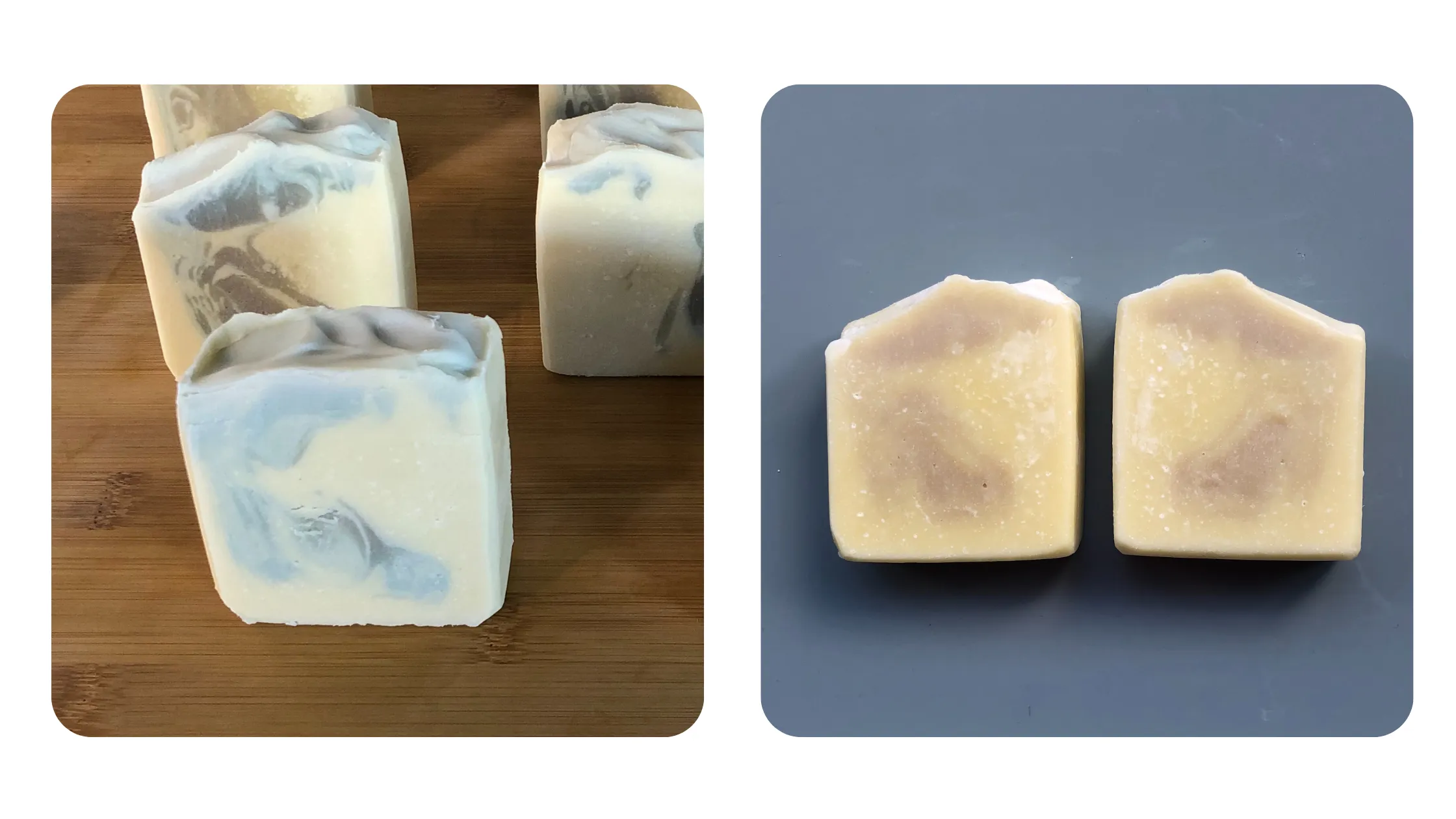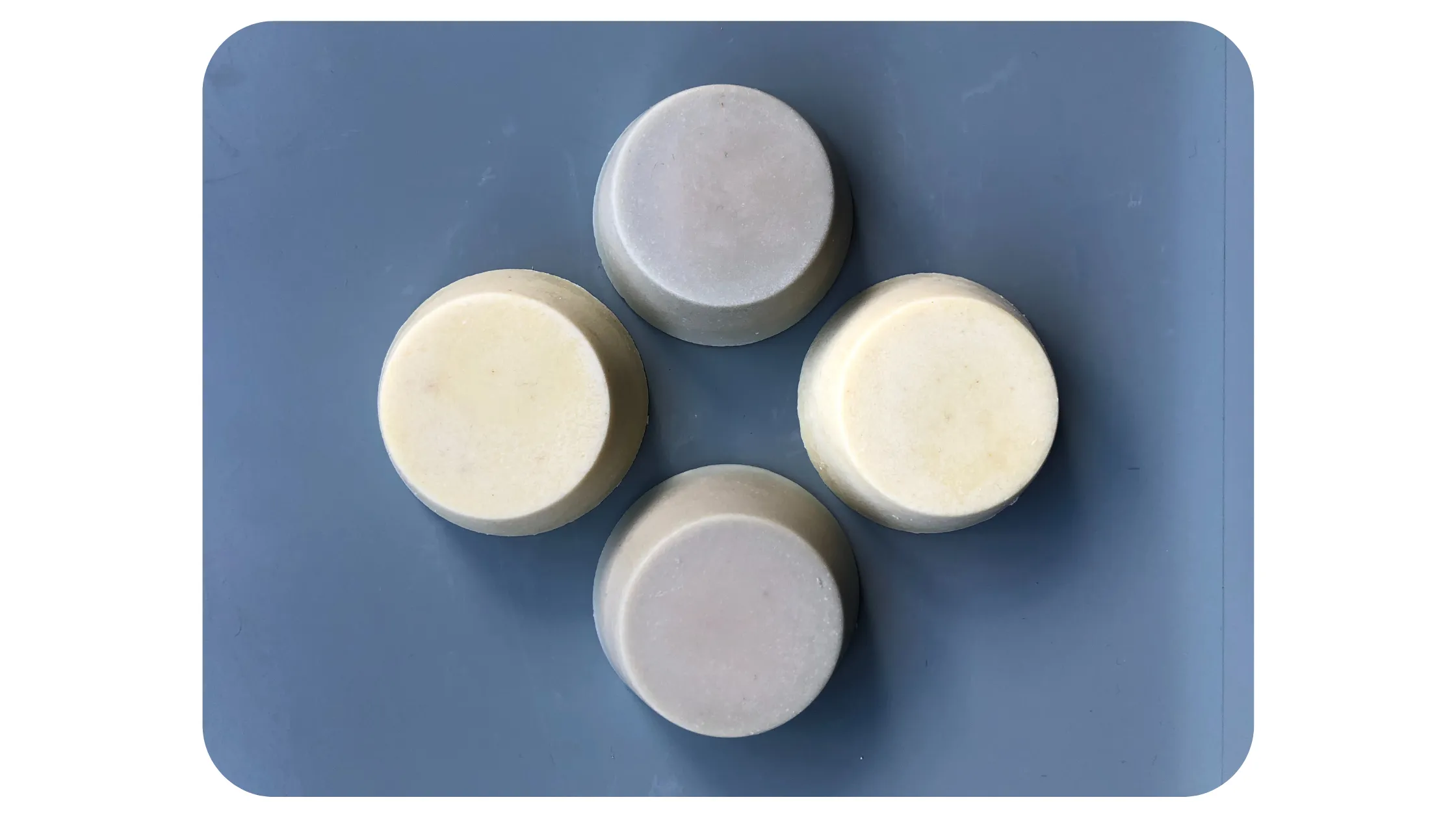Learning to Make Soap: Part 11
Testing my natural colourants

Testing my natural colourants Following on from last week and the difficulties I was having buying ingredients due to the multitude of ethical dilemmas, I am pleased to report that I have finally managed to order everything I need to finalise my soap formulations.
The next step is to test out the natural colourants. I have got a number to test including activated charcoal which comes from coconut shells, this should colour my soap dark grey to a bluey grey. Spirulina Powder is from a blue/green algae and should colour my soaps green. Madder root powder is from crushed roots of Rubica Tinctoria which contains the natural red pigment alizarin. When used in soap it can result in colours ranging from light pink, to deep red and mauve. Alkanet root is from the plant Alkanna Tinctoria and can be used to colour soaps a light grey to a dark purple. And finally annatto seeds, these seeds are often used to colour foods (including cheese!) and should colour my soaps a sunshine yellow to a bright orange depending on how much I add!
I have already had a few attempts at using alkanet root to colour my soaps. To use alkanet root you must first make an oil infusion. I did this using the traditional slow method - you add the botanical to a glass jar, cover with oil (in my case organic sunflower oil) and leave it for 4 to 6 weeks in a dark place, shaking it regularly. The oil will take on the colour from the alkanet root. After straining you can use the oil in your soap making. The first time I used the alkanet oil infusion I just added 15g to colour a portion of my soap batter and used that to create a swirl pattern. Although it looked really great when it first came out of the mould it has now faded considerably to a grey/purple.

For my next attempt with alkanet root I used my infused sunflower oil to replace all of the sunflower oil in my soap recipe (12% of total soaping oils). This does look promising, but I only unmoulded the soaps on Saturday so there is still a possibility it might fade - I will have to wait to see how it looks once the soap has cured.

So the next step is to make my infusions in olive oil. This is because olive oil makes up the largest proportion of the oils in my soap, giving me the best chance of a vivid colour.
I set up my infusions yesterday (I used 5g of botanical per 100g of olive oil). This time I couldn't use the slow method as waiting 4-6 weeks to test my colourants wasn't really an option! Instead I infused my oils using the quick method. This involves preparing the oils exactly as you would for the cold method but instead of leaving them for 6 weeks you gently heat them for 2-4 hours in either a slow cooker or in a double boiler. Unfortunately I do not own either of these, so instead I put my sealed glass jars containing the botanicals and oil in a pan, which I filled with water to come half way up the jars. I put the pan on the lowest heat possible and monitored the temperature constantly, making sure it didn't really go over 125°F/52°C. I also mixed them regularly by inverting the jars. Although this is definitely much quicker than waiting 6 weeks, standing over a pot for 3 hours wasn't the most fun I have ever had! How I wished for a water bath (I actually looked up how much a second hand water bath would cost and am seriously considering it!). So although it was considerably quicker, it was a bit time consuming, although I did manage to watch a lot of soaping videos!
So now that these infusions are done, the next step is to strain them into a clean, sterilised jar and then I can use the infused oils in my soap recipe in place of the olive oil. Unfortunately I am still waiting for my Fairtrade coconut oil and shea butter to turn up, so probably won't get to making the soap until tomorrow!
As well as infusing your oils with botanicals, there are some natural colourants that can be added directly to your soap batter. One of these is activated charcoal, which depending on usage rate will colour the soap a dark grey to a grey blue. So as well as trying the infused oils tomorrow, I will also try adding in different amounts of activated charcoal to see what colour I can get - I am aiming for a bluey grey!!
Unfortunately there is one more factor that I need to take into consideration when testing natural colours and that is whether or not the soap needs to go through an optional stage of saponification known as gel phase. Gel phase occurs due to the heat generated during saponification, which turns the soap gelatinous/translucent. In general it really doesn't matter if the soap goes through gel phase or not as it won't effect how the soap performs. However it is thought that gel phase is needed to ensure colours are as vibrant as possible and this can be especially important for natural colours as they are generally more subtle to begin with. Having said that I have seen soap makers who use natural colourants who don't force their soaps through gel phase and the colours look beautiful. So this is something else I will have to test for myself- personally I prefer more pastel shades so it might be that I don't want to gel my soaps but I will need to test this to be sure. In general I have found that my soaps don't tend to go through gel phase (basically my house is too cold!) so I will need to give my soap a helping hand to gel.
Thankfully there are a number of ways you can ensure your soap goes through gel phase - soaping at a higher temperature (~120°F /49°C), increase your water content, covering and insulating your soap using cardboard and towels/ blankets, putting it on a heat pad or putting your soap in a preheated oven (which is actually known as cold process oven process (CPOP) soap!). So far I haven't had much success with forcing my soap through gel phase by just insulating my soap. I tend to only get a partial gel (the tale tale sign of this is the centre of the soap is darker than the outside). I don't have a heat mat so I will have to try the oven method to force my soaps through gel phase to see how that changes the colour. The only problem with that is my oven is a gas oven (naked flames and oils are not a good combination) so I will put my soap in the oven once it is turned off to avoid any disasters!
So I have a lot to test - I will report back next week with how the colours turned out - and then we will all have to wait 4 weeks to see how well the colour stays following curing! Nothing in soap making is quick, but I am hoping the wait will be worth it!
Until next week, take care xx
...
I am Kelly Townsend and this is the Small Kindness Blog. I am a scientist, a bee lover, a rewilding obsessive, and I want to spread Small Kindnesses through the medium of soap. Follow me on Facebook, Instagram and Twitter for your daily dose of kindness (as well as to see how the soap making is going!)
